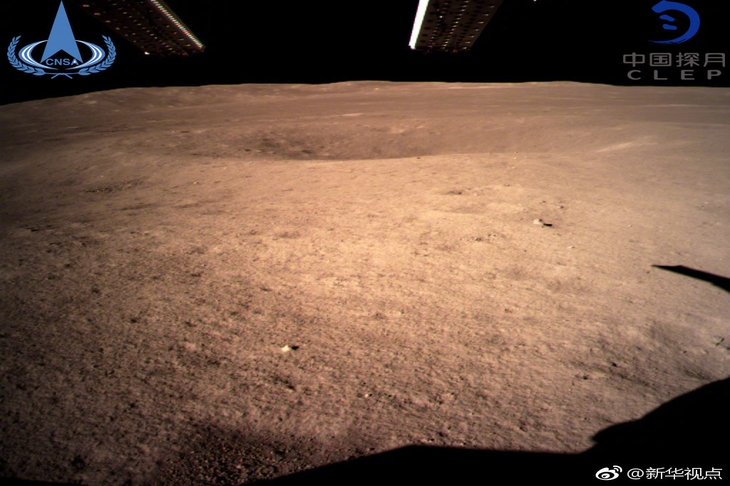This week, humanity made first contact with the dark side of the moon, thanks to China. A Chinese unmanned spacecraft, Chang’e-4, has been able to send back visuals of just what it looks like:

Chinese media exploded in a burst of pride. Given this is the first time any human contact has been made with the back of the moon and the achievement had been lauded as ‘impressive’ by Nasa, you might expect the state newspapers to have been a little smug or superior. But coverage has been surprisingly gracious and lauded the moment as significant for mankind. The People’s Daily newspaper writes a technical front-page story, with the headline – ‘First time! Chang’e-4 realises human contact with the dark side of the moon. First picture! Short distance picture taken of the surface and transmitted back to Earth.’

The front-page story is a technical explanation of the science that made this landing possible and its significance. Xinhua news agency, the Chinese equivalent of Reuters, follows suit with the non-political coverage. It created an entire interactive webpage to explain the landing.
Xinhua writes that ‘at this moment, the world is watching China!’ and ‘this mission… shows that our country has entered the ranks of countries with the ability to explore space.’

But not everyone got the memo. One tabloid blog gleefully tears apart a New York Times article it deems biased. This was the headline from the Global Times, a hawkish paper that is the country’s most popular tabloid.
‘Tsk, Chang’e-4 has only just landed, and American media is already starting to get sour!’
![]()
Referring to this article by the NYT, it gives a blow-by-blow analysis of what’s wrong with the report:

‘Ambition or not, it’s probably not up to you foreigners to judge?’

‘Emmm… of course this sort of technology is sensitive, why should we reveal all to you?’
In a questionable – or maybe not – logical conflation, the target then turns to the EU.
‘Remember the Galileo scheme? At the time, the Galileo project was just being formed, and even though China was an investor, it was pushed out of this and many other core European technological research…
‘We became independent, and painstakingly created our own Beidou satellite system. And again some foreign media was sour and critical, with some incredible amount of cheek. It was okay for them to cover up their tech, but now they come accuse us of theft?’
‘As for Tiangong-1’s fall, that’s an even bigger joke.
‘Everyone concerned with the project knows that Tiangong-1 was a safely completed mission, landed perfect into the North Pacific…at coordinate that are deemed the furthest point on Earth from land. It’s called “The Grave of Spacecrafts”.
‘But before the landing, various foreign media outlets were saying that it could land in New York, Los Angeles, and other densely populated places… Does this slap in the face hurt?
‘And now the New York Times uses Tiangong-1 as an example to suggest a dangerous and unplanned landing…’
Tiangong-1 was China’s first prototype space station. After its mission had ended, its data service was disabled on purpose, and it was closely monitored to ensure a safe landing. The European Space Agency predicted that it would break up when coming back through the atmosphere, and though debris could fall across a wide area, given that it would land in the Pacific, stated that the odds of a person being hit by that was ’10 million times smaller than the yearly chance of being hit by lightning.’ On this, it seems that a state-run tabloid paper in China was less misleading than the New York Times.
As for reports that there was a media blackout prior to the landing, the Global Times also has something to say:
‘We have reported the mission – with photos and celebrations. Are you blind?’
And again they have a point – here’s a detailed People’s Daily report from early December:
‘The People’s Daily reveals: why is Chang’e-4 going to the back of the moon?’

The Global Times goes on:
‘We have also reported on various media forms. Chang’e-4’s probe even had its own social media account and live-shared its trajectory. But do you even understand Chinese?’

Ouch. And fair enough – the screenshot shows that on January 1st, the account tweeted:
‘As the Earth’s satellite, the moon also orbits the sun in 365 days. So I am celebrating the New Year with everyone! Happy New Year! – Best wishes from 350,000km into space.’
Hardly the sign of a media blackout. Looks like it’s game, set, and match to the Global Times.







Comments